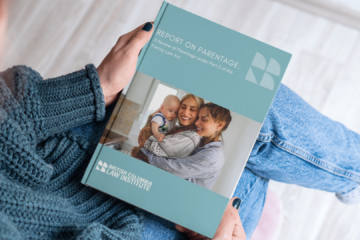A closer look at the Report on Pension Division: Private annuities
May 13, 2021
BY Kevin Zakreski
This post is part of a series highlighting key recommendations in the Report on Pension Division: A Review of Part 6 of the Family Law Act. For other posts in the series click here.
Brief description of the issue
When the Family Law Act was enacted, a new provision was added to deal expressly, for the first time, with the division of “benefits under an annuity that is purchased by the member rather than by an administrator on behalf of the member.” Under this provision, these private annuities are to be divided in the same manner as pensions under local pension plans after payment of pension benefits has commenced. Is this the best approach to dividing a private annuity after the breakdown of a spousal relationship?
Discussion of options for reform
There may be advantages to retaining section 118 in its current form. The section largely fulfills its purpose, which is to clarify the law. Thanks to section 118, it is now clear that private annuities may be divided under part 6. This approach ensures that the sophisticated tools for pension division are applicable to private annuities. In their absence, spouses would have to come to an agreement under part 5 on how to divide a private annuity. If they couldn’t come to an agreement, a dispute over division of a private annuity would have to be resolved through litigation. As has been noted throughout this report, the policy of the Family Law Act is to strive to keep these kinds of disputes out of the courts.
But, that said, there may also be drawbacks to the current approach. Section 118 rests on the insight that it’s desirable to divide a private annuity in the same manner as a pension under a local pension plan after pension commencement. In practice, drawing these two different things so tightly together may create problems and uncertainties. This point raises the concern that section 118 might be out of step with the broader policy of part 6, which is to provide detailed rules for pension division that are tailored to specific kinds of pensions. Instead of taking this approach, section 118 simply relies on an analogy between private annuities and local plans after pension commencement. This analogy might not be possible to sustain through the entire process of dividing the private annuity.
Finally, unlike many other issues for reform in this report, this issue doesn’t present a clear-cut, yes-or-no policy choice. The proposed response to this issue could reasonably include elements of the current law along with specific changes to it.
The committee’s recommendation for reform
The committee gave extensive consideration to this issue. In the end, it settled on an approach that would preserve and clarify some aspects of the current law and would change other aspects of it.
The committee is of the view that the equivalence created in section 118 between private annuities and local plans after pension commencement is open to question. In particular, it was noted that annuities may be purchased all at one time. In this way, they can lack the temporal element that is integral to pensions. This can create problems in applying the formula for determining a proportionate share of a pension to an annuity. There is simply no equivalent to the concept of pensionable service for an annuity. This creates uncertainty for a key aspect of the formula that applies to division of an annuity.
The committee also noted that annuity is a very broad term. The funds used to purchase an annuity may come from a variety of sources. These funds may not, in practice, derive from pension funds.
That said, dividing an annuity retains many aspects of the division of an income stream. Looked at in this respect, it does make sense to divide many annuities under part 6, because part 6 has appropriate tools for the division of an income stream. If the annuity is in pay, it should continue to be divided under part 6. If not, then the Family Law Act should be amended to clarify that division of the private annuity is under part 5.
The committee decided to propose retaining division under part 6 for some private annuities, while requiring an order or agreement under part 5 for others. In the committee’s view, the relevant dividing line is whether payments have commenced under the annuity. If the annuity is in pay, then it should be divided under part 6. If not, then the Family Law Act should be amended to provide for division of the private annuity under part 5.
The committee’s proposal had the unanimous support of respondents to the consultation paper. But as a result of comments in one of those responses, the committee has refined its proposal, by deciding to remove paragraph (a) (ii) from its recommendation (“division should be 50-50 to each spouse, subject to a different share by agreement or court order”). In the committee’s view, this language could cause some unwanted consequences, as it may open to an interpretation that puts it at odds with the provisions of part 5 of the act. What remains as recommendation no. 5 (a) is intended to clarify the law and not to change it.
The committee recommends:
The Family Law Act should be amended to make the following changes to the treatment of private annuities:
(a) for annuities that have been purchased but are not in pay then the drafting of the provisions should be clarified such that it’s clear that the legislation applies to the purchase of an annuity for a member or spouse; and
(b) if the annuity for a member or spouse is in pay, then part 6 applies, and the income stream should be divided 50-50 to each spouse, subject to a different share by agreement or court order, and a spouse is entitled, by giving notice in accordance with section 136 of the act, to receive a share of the benefits payable under the annuity directly from the annuity issuer during the annuitant’s lifetime until the earlier of
(i) the death of the spouse, and
(ii) the termination of benefits under the annuity.












































